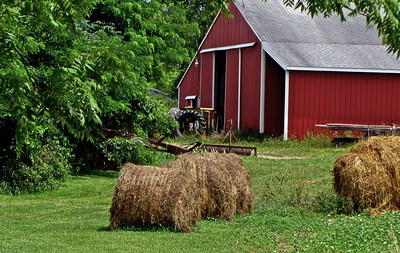Earlier this month, I wrote about new research on the economic viability of family farms in Wisconsin. The research sheds some light into the viability of family farms everywhere. So, what does Michigan’s family farm picture look like, and are Michigan’s family farms facing the same headwinds that Wisconsin farming families are contending with?
The USDA does a detailed national analysis of farms every five years. The next Census of Agriculture will take place in 2027, and the USDA will release the data sometime in 2029. According to the US Department of Agriculture, in 2022 there were about 45,600 farms in the State of Michigan. Of those farms, about 84% were classified as family farms.
Farming in Wisconsin isn’t remarkably different from farming anywhere else in the US. We can assume that Michigan farm families and Wisconsin farm families face similar economic and operational challenges. One of the challenges that researchers in Wisconsin noted is that the size of the farm plays an important role in the farm’s overall financial viability. Small farms face the biggest survival challenges, while the largest farms seem to require much less non-farm financial support.
The takeaway was that farms are rarely self-sufficient, and the smaller the farm is, the more financial support it requires from non-farm sources. In the Wisconsin study, farms with farming income below $100,000 needed additional non-farm income of at least $102,000 to offset losses from farming operations. In contrast, farms with farming income that exceeded $1M, needed only about $150,000 of income from non-farm sources to keep the lights on.
What about Washtenaw County family farms?
So, from the USDA’s Michigan data, only about 5% of Michigan farms reach the magic $1M threshold. These are the farms that need the least amount of non-farm income to remain in business. In contrast, more than 33,000 farms generate less than $100,000 in farm income annually. These are the farms that need the most amount of non-farm income to remain in operation. They account for about 73% of farms in Michigan. This tracks with the Wisconsin study, where 75% of farms there needed significant non-farm income to remain solvent.
Unfortunately, the average Washtenaw County farm income in 2022 was about $24,250. The good news is that when adjusted for inflation, that’s 20% more than the average income for a Washtenaw County farm in 2017. The USDA data also show that only about 250 Washtenaw County farms produce income that exceeds $100,000. Based on this data set, it’s impossible to tell how many farms in Washtenaw County exceed the $1M income mark, but if the figure is 5% statewide, we could use that to estimate that no more than about five dozen of Washtenaw County’s 1,250 farms do. These farms need the lowest amount of non-farm income to remain operational.
If preserving family farms is an urgent need here, Washtenaw Community College could help preserve the County’s family farms by constructing programs to assist farmers in developing viable job skills that will generate enough income to keep family farms solvent. Better still, programs that enable family farms to increase their farm income potential would also reduce their need for non-farm income sources and help further stabilize the farming operation.
On the other hand, if family farming is not important, and the only thing of value is the farmland, then the City of Ann Arbor and Washtenaw County owe this explanation to Washtenaw County residents and should come up with a plan for all the land they’re hanging the “Greenbelt” tag on.
Photo Credit: ellenm1 , via Flickr










